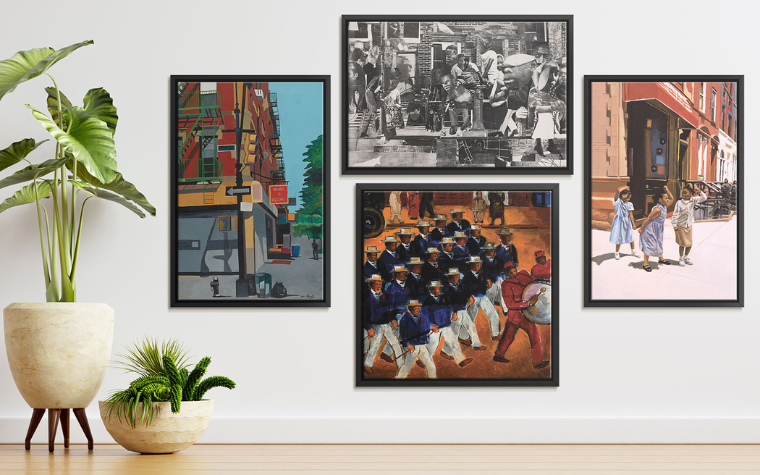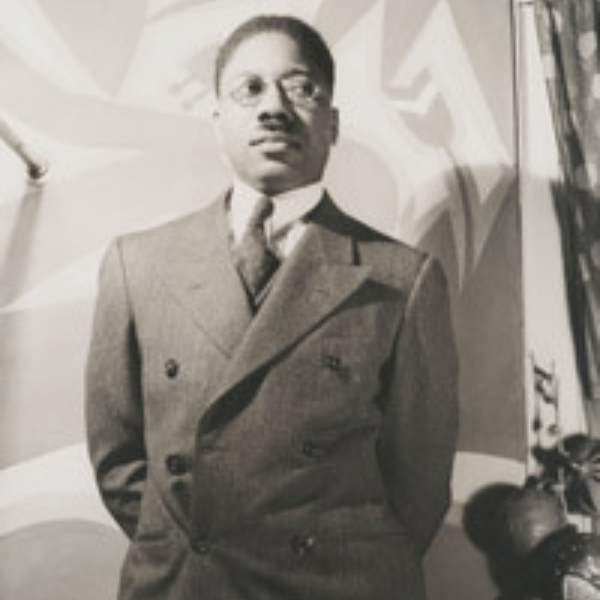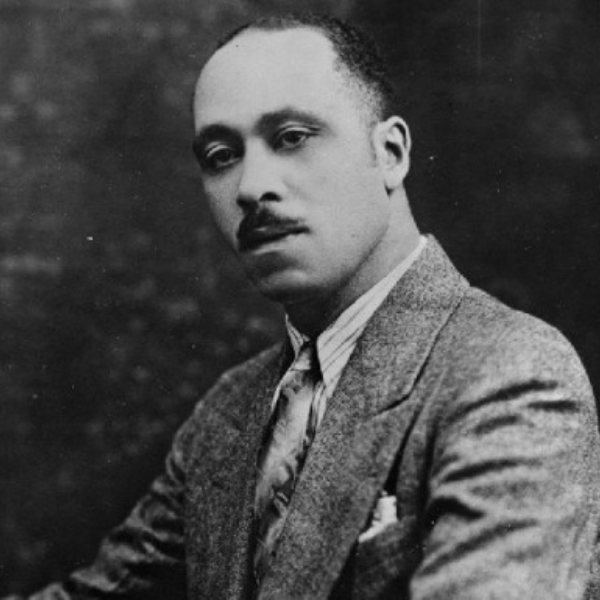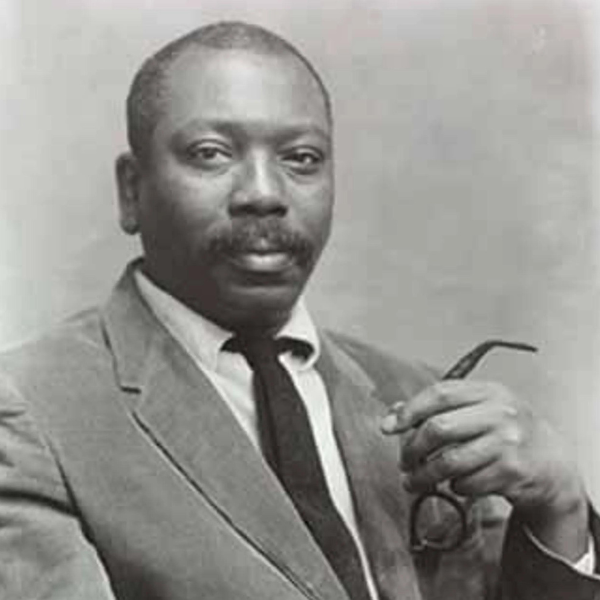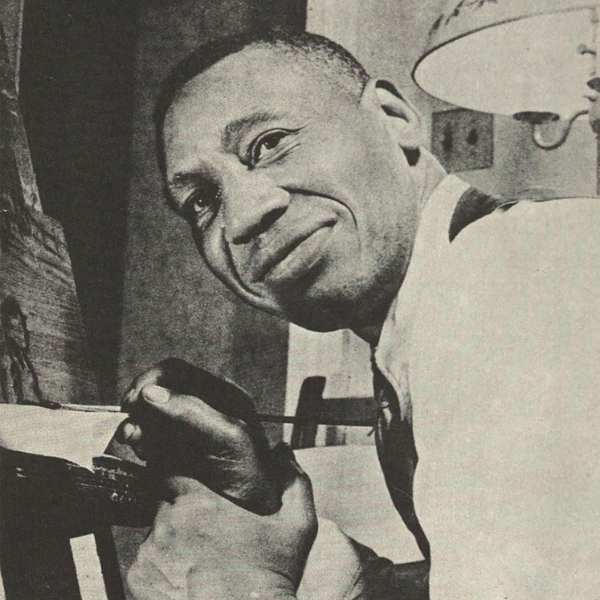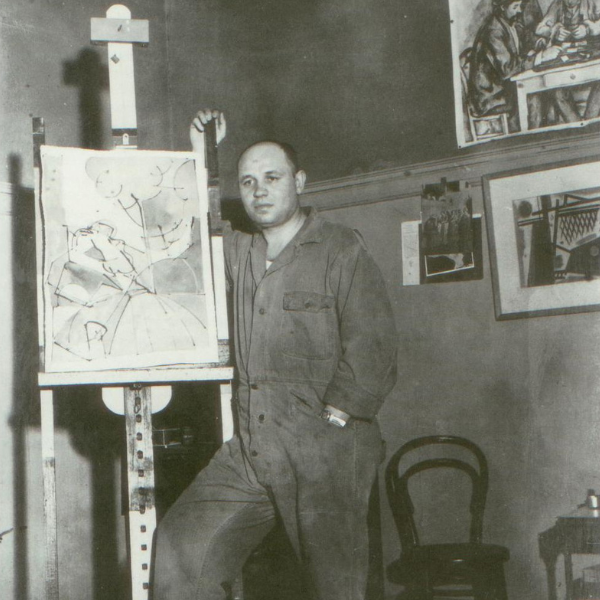The Harlem Renaissance: Redefining Art, Culture, and Identity
This post was written by Sally Wolff, Licensing Manager at iCanvas. With over 15 years of experience in the Fine Art industry, she received her Art History degree from the University of Wisconsin at Milwaukee. Wolff’s extensive career includes managing exhibitions of iconic masters like Picasso and Warhol at Martin Lawrence Galleries, as well as curating historical shows at the Milwaukee Art Museum. We’re honored to showcase her passion and knowledge for art.
“Hold fast to dreams, for if dreams die, life is a broken-winged bird that cannot fly.” — Langston Hughes, “Dreams”
In the aftermath of the Civil War and World War I escalating in 1917, African Americans began to fervently pursue their dreams. They sought to escape the pervasive racial discrimination of the South, searching for educational and economic opportunities, and a freedom long denied. The Great Migration (1916-1970) saw more than six million African Americans move from the rural South to the urban North. Through their boundless creativity, they transcended adversity, reshaping their societal standing and ushering in an era that would become known as the Harlem Renaissance.
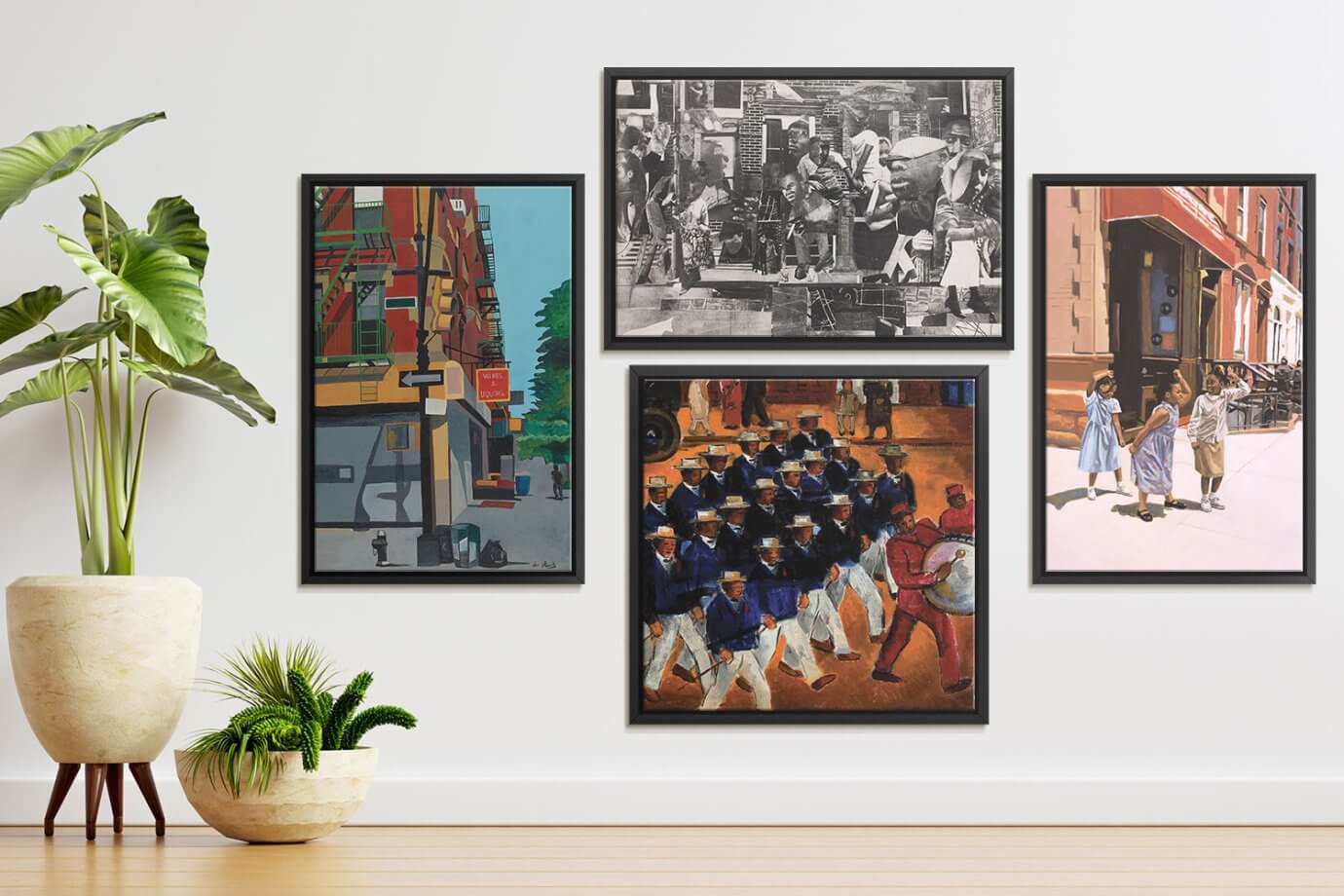
The Harlem Renaissance was a pivotal moment in American history, introducing African American culture, identity, and creativity to a broader audience. This movement led to the widespread recognition and respect for a culture that had been deeply suppressed for generations. It marked the birth of the first modern Afrocentric cultural movement and the development of Black avant-garde visual arts.
The artistic style of the Harlem Renaissance, though innovative, was deeply rooted in historical influences. Emerging from the amalgamation of Cubism, Realism, ancient African art, and other movements, the Harlem Renaissance became a powerful force that seamlessly narrated the story of African American identity through visual arts, forever altering the course of history.
Impactful Artists of the Harlem Renaissance
The Harlem Renaissance was not merely a cultural movement but a powerful assertion of African American identity, resilience, and creativity. Visual artists played pivotal roles in reshaping the American cultural landscape. Through their unique styles and perspectives, these artists brought the rich heritage of African Americans to the forefront of modern art, inspiring future generations and leaving an indelible mark on history. The dreams they held onto became the wings that allowed them—and their culture—to soar.
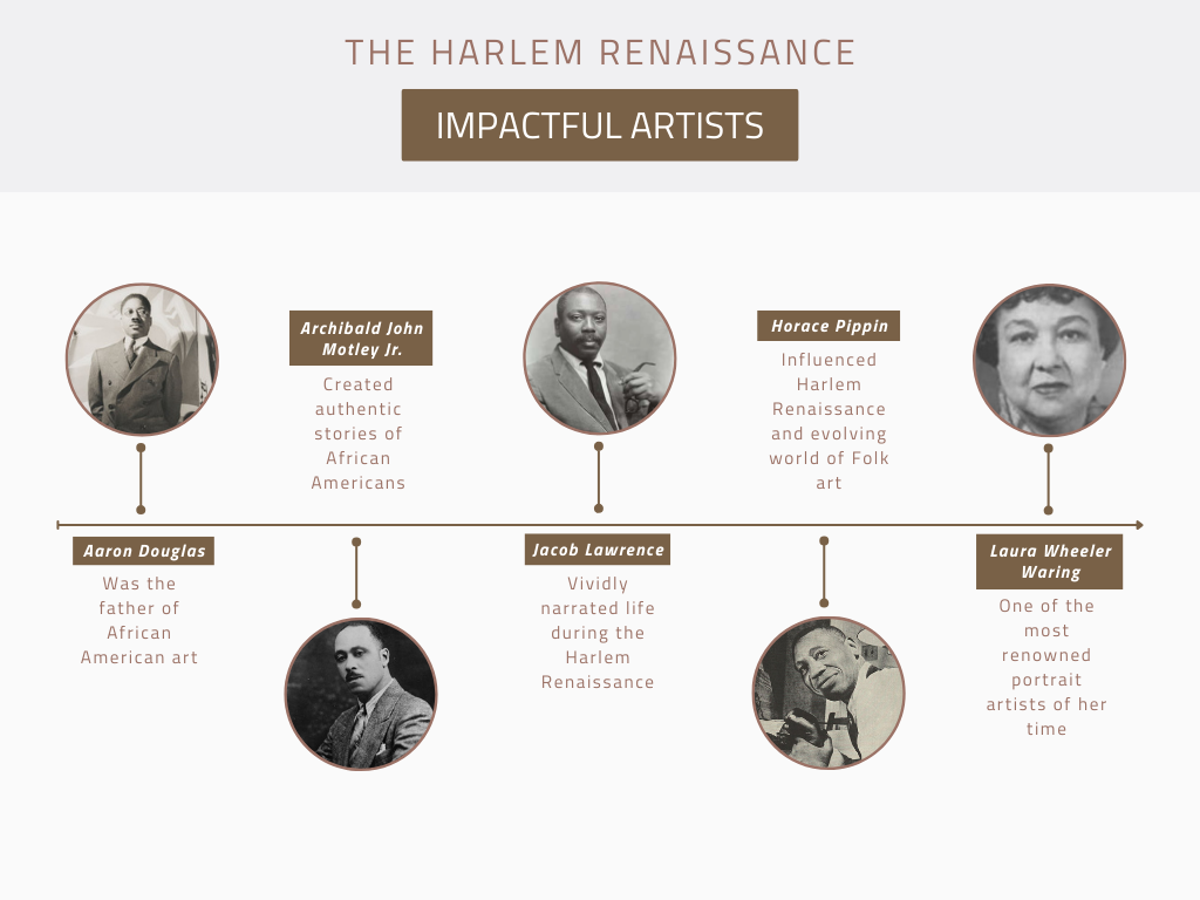
Aaron Douglas
Aaron Douglas (1899-1979), often referred to as “the father of African American art”, synthesized modern movements such as Cubism and Art Deco with ancient and West African art. His work featured fragmented subjects characteristic of Cubism, tonal colors typical of Art Deco, and the geometric shapes drawn from African art. These hallmarks of Douglas’s work not only defined his artistic legacy but also influenced countless other artists.
Archibald John Motley Jr.
Archibald John Motley Jr. (1891–1981) was one of the first African Americans to study at the Art Institute of Chicago. George Bellows encouraged him to embrace the mid-19th century movement of Realism and to focus his work on Urban Realism. His work combined elements of Realism with Modernism, and is recognized for his stylized portrayals of nightlife and everyday scenes. Him showcasing authentic stories of African Americans became a key attribute of the Harlem Renaissance.
Jacob Lawrence
Jacob Lawrence (1917-2000) broke racial barriers in 1942 when he became one of the first African American artists to have his work acquired by the Museum of Modern Art in New York. The cultural and intellectual outpouring of the Harlem Renaissance inspired his path in the art world. Influenced by Cubism and Realism, Lawrence’s work vividly narrated life during the Harlem Renaissance, making him a central figure in the movement.
Horace Pippin
In 1918, while serving in the Army’s 369th Infantry Regiment, Horace Pippin (1888-1946) was shot in the right shoulder, leaving him permanently disabled. Pippin began experimenting with wood-burned panels and eventually transitioned to oil paintings. Despite having no formal training, his linear style, expressive colors, and powerful sense of design captured memories of war, historical narratives, still life, and portraits. This led him to leave a significant influence on Harlem Renaissance and the evolving world of Folk art.
Laura Wheeler Waring
Laura Wheeler Waring (1887-1948) drew inspiration from the Impressionist movement and artists such as Monet, Manet, and Cézanne, becoming one of the most renowned portrait artists of her time. Her dignified and elegant portrayals of Black individuals reflected a sensitive and elevated society during the Harlem Renaissance. She went on to receive commissions from notable individuals such as W.E.B. Du Bois, James Weldon Johnson, George Washington Carver, and Marian Anderson.
Romare Bearden: A Prominent Harlem Renaissance Artist
Romare Bearden (1911-1988) was born in Charlotte, North Carolina. Like many African American families of that era, his family moved to New York in 1914, unknowingly becoming part of the Great Migration. By 1920, the Bearden family had settled permanently in Harlem—a relocation that would profoundly shape Bearden’s life and career. This vibrant cultural environment would inspire him to become one of the most prominent artists in the United States from the mid-1960s until his death in 1988.
Romare Bearden’s Famous Works
Bearden, like many artists of the Harlem Renaissance, drew inspiration from both Western and African art traditions. He admired the works of Western masters such as Duccio, Giotto, de Hooch, Cézanne, Picasso, and Matisse, while also integrating the rich heritage of African art into his work. His innovative collage technique, utilizing cutouts from magazines, photographs, and other printed materials, allowed him to create complex, textured images that explored themes of identity, community, and history. Through a blend of realism, cubism, and abstraction, Bearden masterfully merged his personal experiences with broader cultural influences, leaving a lasting impact on both the Harlem Renaissance and the broader art world.
“Patchwork Quilt”
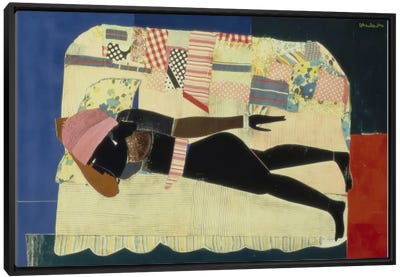
“Patchwork Quilt”, showcases Bearden’s skill in fragmentation and recombination. Inspired by Egyptian tomb reliefs and Cubist paintings, the piece evokes African American domestic traditions. Bearden reflected on this piece, stating, “I try to show that when some things are taken out of the usual context and put in the new, they are given an entirely new character.”
“The Dove”
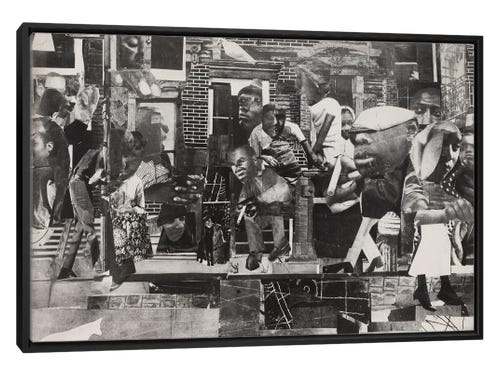
“The Dove” explores Black culture in America. Crafting figures from everyday paper scraps, he connects the experiences of the 1960s to those of the past, encouraging reflection on continuity. PBS recognized the significance of this piece, featuring it in an episode of their “Picturing America” series.
“Roots (Odyssey)”
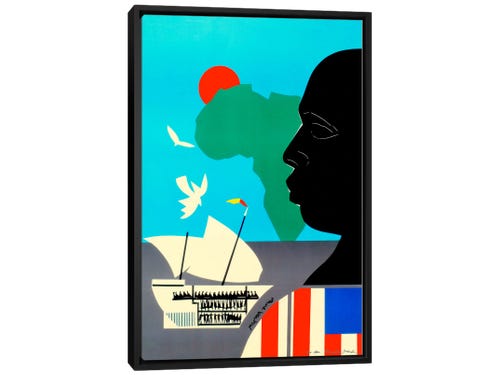
“Roots (Odyssey)” was the cover for TV Guide in 1977, coinciding with the mini-series based on Alex Haley’s 1976 book. It delves into historical themes, with symbols such as the American flag t-shirt and a central map of Africa representing racial pride and independence. Bearden’s work underscores the growing recognition of Black history and identity
“The Lamp”
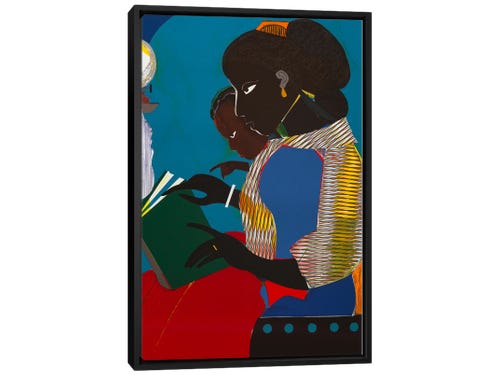
“The Lamp” intertwines art with historical significance. This piece commemorates the 30th anniversary of Brown v. Board of Education, a landmark Supreme Court decision that declared racial segregation in schools unconstitutional. The NAACP featured this image on their official poster and was later included in a U.S. postage stamp collection in 1984.
Click here to see all of Romare Bearden’s art on iCanvas.
Explore More Harlem Renaissance Art
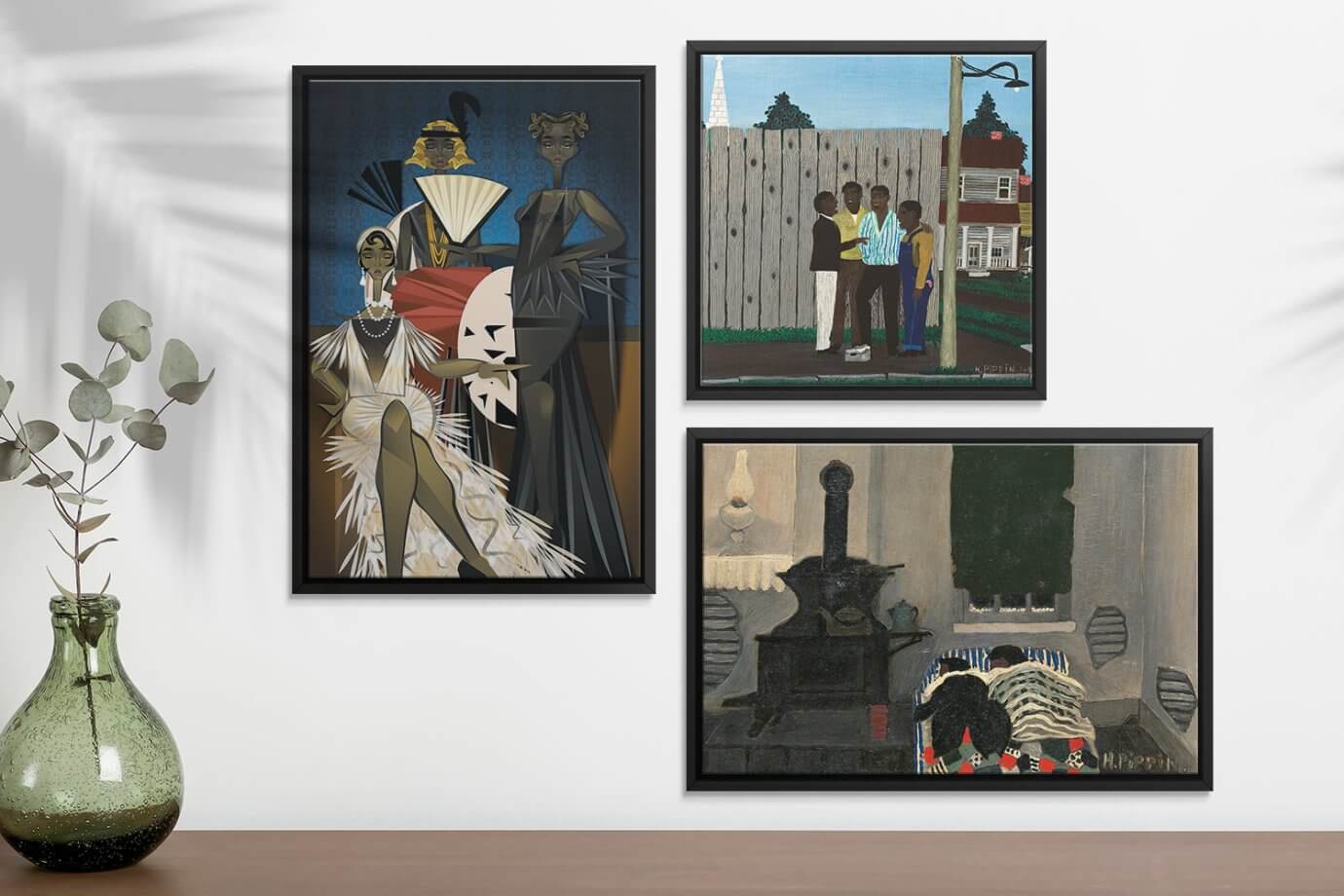
Now that you’ve delved into the history of the Harlem Renaissance and the impactful artists that redefined African American culture, identity, and pride, it’s time to explore our collection of Harlem Renaissance prints. This artwork showcases dynamic collages, vivid portrayals of everyday life, and bold explorations of identity and transformation, reflecting the rich diversity of African experiences.
Click here to see the Harlem Renaissance art collection on iCanvas.

